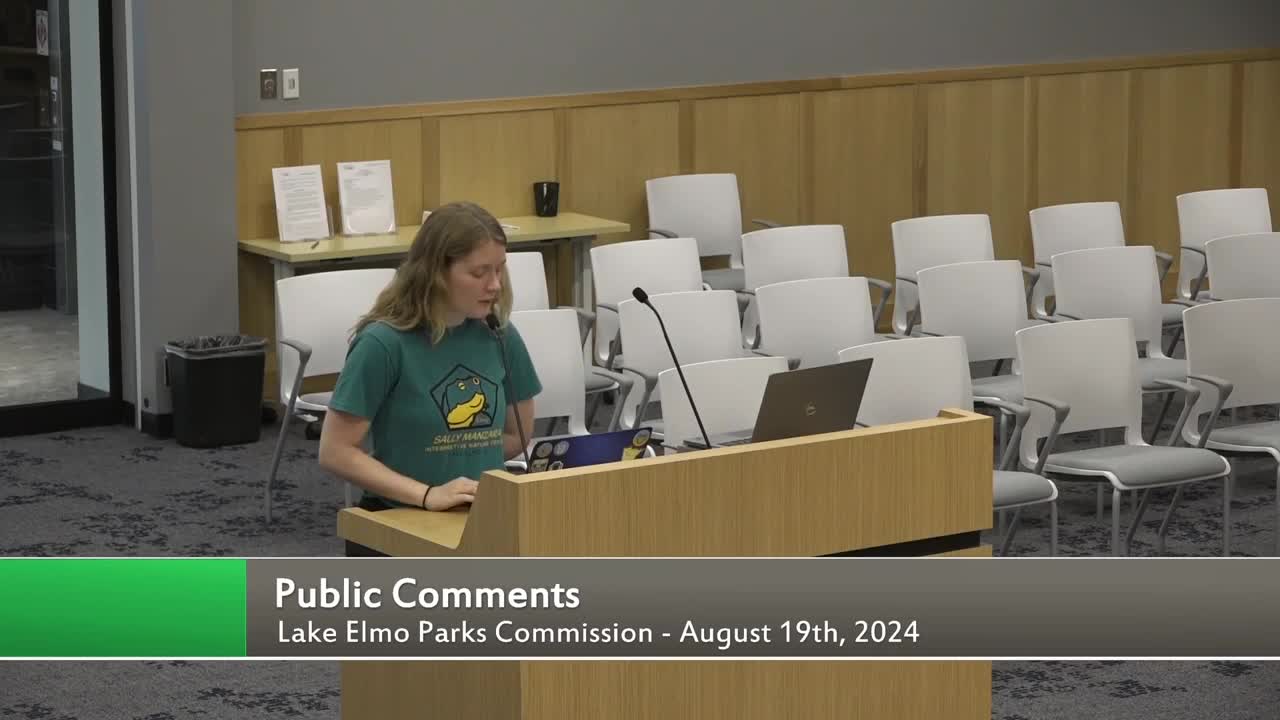Community rallies to combat invasive species in local park
August 19, 2024 | Lake Elmo City, Washington County, Minnesota
This article was created by AI summarizing key points discussed. AI makes mistakes, so for full details and context, please refer to the video of the full meeting. Please report any errors so we can fix them. Report an error »

In a recent government meeting, officials discussed the ongoing efforts to manage invasive plant species in local parks, particularly focusing on common burdock and buckthorn. A presentation highlighted the mapping of burdock prevalence along park trails, showcasing areas of high and low density. The speaker emphasized the importance of monitoring these species, especially in the context of climate change, and outlined future goals that include applying for grants to fund removal efforts and engaging the community in volunteer initiatives.
The presentation included visual aids, such as maps and photographs of the invasive species, and noted that certain species were concentrated in specific topographies within the park, with burdock being widespread and mullins thriving in sunnier prairie areas. The speaker also clarified that their list of invasive species was derived from the Minnesota Department of Natural Resources' noxious weed list, indicating a significant overlap but a smaller selection of species present in the park.
Following the presentation, George Johnson, known for his work on buckthorn removal, provided an update on his ongoing project, which is now in its seventh year. He reported challenges faced due to unseasonably warm weather affecting their removal efforts and highlighted the continued community involvement, with monthly volunteer days attracting between seven to fifteen participants. Johnson announced upcoming events, including a Buckthorn Festival scheduled for October 26, aimed at further engaging the community in invasive species management.
The discussions underscored a collaborative approach to preserving the natural landscape and enhancing community awareness about invasive species, with plans for educational resources to be made available online and at the nature center.
The presentation included visual aids, such as maps and photographs of the invasive species, and noted that certain species were concentrated in specific topographies within the park, with burdock being widespread and mullins thriving in sunnier prairie areas. The speaker also clarified that their list of invasive species was derived from the Minnesota Department of Natural Resources' noxious weed list, indicating a significant overlap but a smaller selection of species present in the park.
Following the presentation, George Johnson, known for his work on buckthorn removal, provided an update on his ongoing project, which is now in its seventh year. He reported challenges faced due to unseasonably warm weather affecting their removal efforts and highlighted the continued community involvement, with monthly volunteer days attracting between seven to fifteen participants. Johnson announced upcoming events, including a Buckthorn Festival scheduled for October 26, aimed at further engaging the community in invasive species management.
The discussions underscored a collaborative approach to preserving the natural landscape and enhancing community awareness about invasive species, with plans for educational resources to be made available online and at the nature center.
View full meeting
This article is based on a recent meeting—watch the full video and explore the complete transcript for deeper insights into the discussion.
View full meeting
